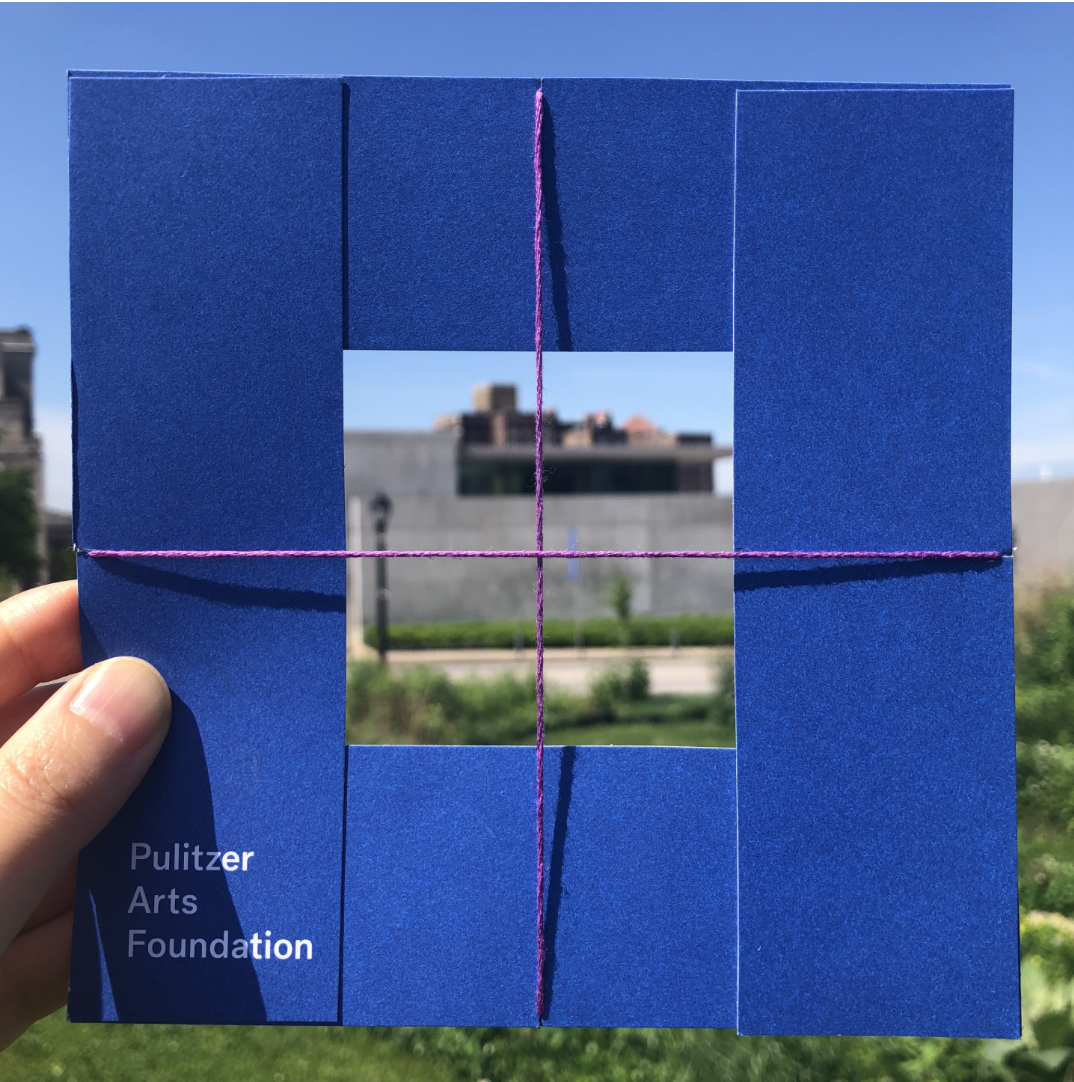What Does the Eye See?

This is a message I shared with Jamestown Friends Meeting in Jamestown, NC on June 11, 2023.
Matthew 9:9-13
“As Jesus was walking along, he saw a man called Matthew sitting at the tax booth; and he said to him, “Follow me.” And he got up and followed him.
And as he sat at dinner in the house, many tax collectors and sinners came and were sitting with him and his disciples. When the Pharisees saw this, they said to his disciples, “Why does your teacher eat with tax collectors and sinners?” But when he heard this, he said, “Those who are well have no need of a physician, but those who are sick. Go and learn what this means, ‘I desire mercy, not sacrifice.’ For I have come to call not the righteous but sinners.””
Matthew 9:9–13 NRSV
An Exercise in Seeing
Today, I want to talk to you about seeing. About what you see and how you see.
So first, before we begin, Let’s take a deep breath together.
Then, I want you to look around. Look around the room. Look at each other. It’s okay to make eye contact if you like. It might be a little weird or silly, but that’s okay. But what I want you to do is look and make an effort to take it all in first. What do you see? What do you notice?
Hold that thought.
Seeing What You See
One of my favorite authors, Austin Kleon, has a book called: Keep Going: 10 Ways to Stay Creative in Good Times and In Bad. In it, he writes about one of his favorite artists: a nun named Sister Mary Corita Kent. The story he tells is of when she became inspired by a show she saw from Andy Warhol that led her into screen printing.
This is what Kleon wrote about her:
“She would take pictures of advertisements and signs all over the city — the stuff we usually think of as junk, clutter, and eye pollution — and she would transform those things by taking them out of their context, adding them to handwritten lyrics from pop songs and Bible verses, and print them as if they were religious messages.”
“She turned a bag of Wonder Bread into a message about taking communion. She stole the General Mills slogan, “the Big G stands for Goodness” and made the “G” from the logo seek like it was referring to God.”
Austin Kleon, Keep Going, P. 101
It’s one thing to say we see God in all things; It’s quite another to be like Sister Kent and see God in advertising too?!
More from Kleon:
“[Sister] Kent said she made common things “uncommon.” (She thought “uncommon” was a better term than “art.”) “I don-think of it as art,” she said, “I just make things I like bigger.” She had a particular way of looking at the ordinary world, and she taught this way of looking to her students. In one of her assignments, she had students create what she called a “finder,” a piece of paper with a rectangle cut out of it to simulate a camera viewfinder. She would lead her students on field trips, teaching them to crop the world, to “see for the sake of seeing,” and discover all the things that they’d never bothered to notice.”
Ibid.

What draws me to this story about Sister Kent is the intention of stepping back and considering what it is she was seeing in order to see what had gone unnoticed around her.
I think art and creativity is very much about seeing the common and making it uncommon in this way. Art makes things new. Art skews the world in a way, making it different enough that we can see something again as though for the first time.
Emily Dickinson said, “tell the truth but tell it slant.”
Another writer I love, David James Duncan says this about art:
One of the signs of a true artist is a willingness to work patiently and lovingly with even the most inferior materials.
But this isn’t just about art: this is what spiritual life is all about. If being people of faith is anything, I think it is about learning how to be awake to our surroundings and to see the movements of God some of which are very small and imperceptible.
Faith is about seeing the common and making it uncommon, making it new, seeing God within.
Follow In My Way of Seeing – Jesus
In our passage this morning, Jesus says something that is now very common to us. He says to Matthew, a tax collector – a common guy for whom his community could not see anything good within: Jesus says to him: “Follow me.”
The word translated follow – ἀκολουθέω – meaning something like “accompany,” as in Jesus is saying to Matthew, “I invite you to accompany me on my journey of learning how to see.”
What does it mean to follow Jesus today if it doesn’t mean to at least in part, “learn how to see the way Jesus saw.”
To follow in this instance means to be faithful to God’s invitations and leadings, which means we must be paying careful attention so we can *see* where those inviations are coming from.
To follow doesn’t mean to be unique or special for the sake of being unique and special. It means to see with spiritual glasses, and to make the common uncommon.
It means, in the words of Amy Krouse Rosenthal:
“For anyone trying to discern what to do with their life: Pay attention to what you pay attention to. That’s pretty much all the info you need.”
If following isn’t at its heart a reorientation with how we see, and then heeding the invitations of God that arise from what we see, what would it be?
The rest of this passage is instructive on this point as well. Jesus tests the way others see. He does this by who he pays attention to.
Who you eat with was, and still is, so important. It speaks to what and who we value. Back then “Table Fellowship” was an even bigger deal. Jesus sat and ate with people who were only seen as their labels — tax collectors, sinners, sex workers, the poor. They’re seen as a single thing that makes that person easy to be reduced down to something less-than-fully-human.
In sitting with and eating with these “broken people,” Jesus through his actions, saw the stereotyped and rejected, in an uncommon way. He saw them as his community. His friends. Those he wished to be associated with even if it damaged his image to some around him.
It should not go unnoticed that these were the very people he asked to follow and see the world differently with him. It is the metaphorically sick, those who already have a disorientation to the world, who are the most likely to be able to see for the sake of seeing something new, something unnoticed.
Where Is There Life?
In January, I was asked to join Ministry and Council at our meeting. For the last couple of months, I’ve been helping to lead our meeting through a renewal process that is all about what we pay attention to. In the process, we challenge ourselves to get out of seeing and focusing on the problems.
In our society today, we are so accustomed to “problem solving” models of change. You put all your energy into looking for the problems, then you pour energy and resources into fixing those problems, and then, if everything goes according to plan, wah-lah, everything is supposed to be fixed.
This has generally been the focus within Quaker meetings and yet I have to admit that I don’t see a lot of fixing going on. I see a lot of meetings getting stuck in their struggles.
We are using an alternative model, instead of focusing our main energy on problems, we practice looking for signs of life. We look for the uncommon hidden by the common. In this “appreciative model” we look for what is working. We look for where the deep gratitude is within the meeting. Where hopes and dreams persist. Where the sick are being made well.
This process, besides helping shift what we see, enables a community to create a container of gratitude through which the problems and challenges that are present are not so overwhelming or scary.
Questions we ask to help us see differently are:
- Where is there life?
- What is the best parts of us?
- When have you felt most alive?
- What are your dreams for this community?
Each question assumes that “in every community, some things work well.” And “what we focus on becomes our reality.”
“Tell me to what you pay attention and I will tell you who are.”
Jose Orega Y Gassett
What if this was our way of seeing ourselves, seeing one another, and the world around us? In the hopes that what we pay attention to begins to change us.
A Closing Exercise
We began by looking around. Taking in this space and one another.
Imagine now if you had a camera finder in your hands – make this with your hands – and you began to focus in with these questions: where is there life? What are the best parts of us? Where is the uncommon hidden by the common?
What do you see?